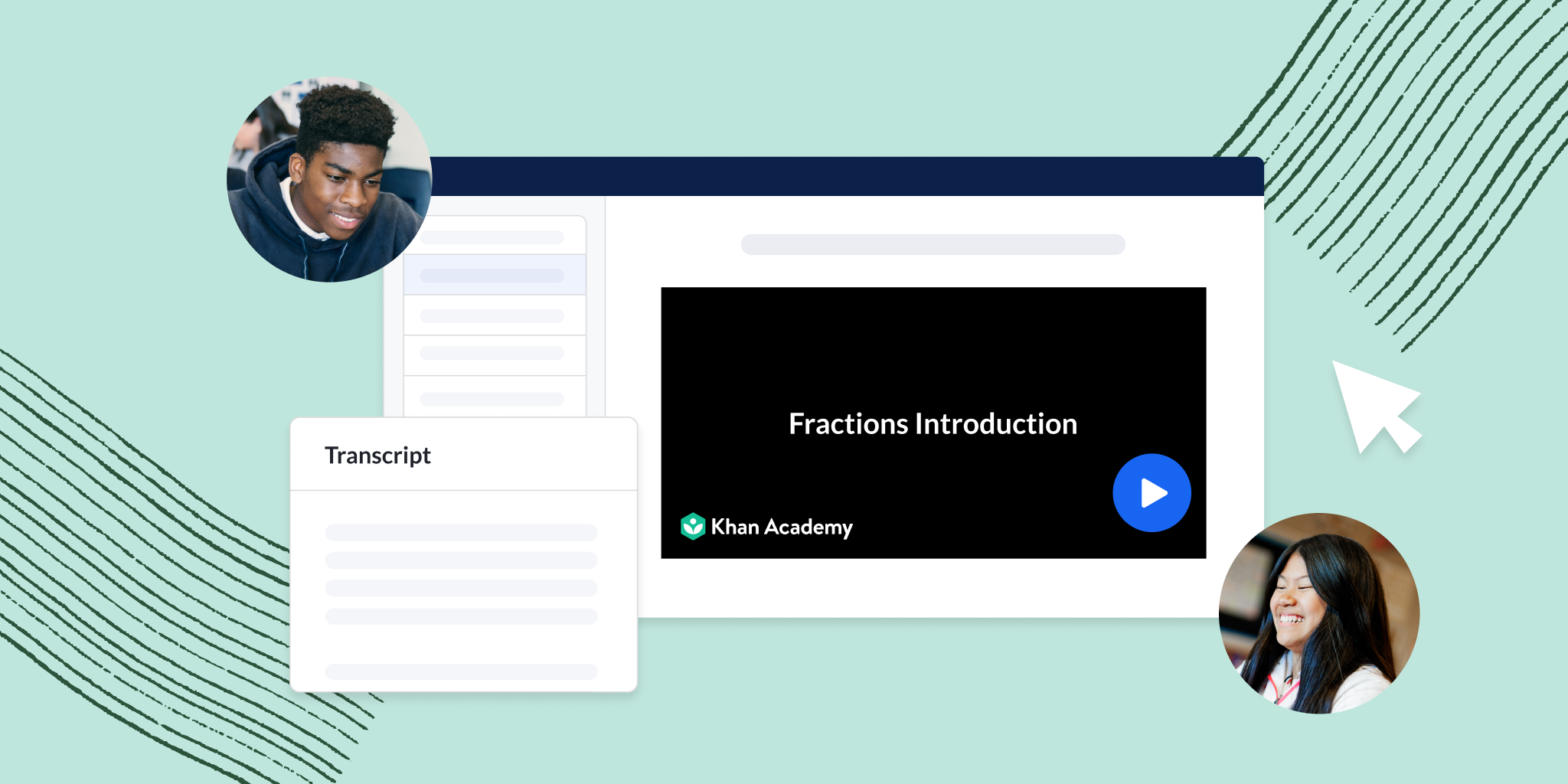The third in a four-part series about the science of learning
by Kristen DiCerbo, chief learning officer.
One of the key features of Khan Academy is our practice exercises. They provide the opportunity to use new skills you are learning, which is key to making sure you’ll remember the skills in the future.
Here’s what is most important to know about doing practice exercises: It’s OK to need help! For more than 100 years, educators have said that students learn the most when they are doing tasks that push them a little beyond what they know how to do independently, and require them to have a little support to be successful. If students can do the activity on their own without help, it’s probably too easy.
At Khan Academy, we have two methods of providing help: hints that provide support while you are answering a question and rationales that provide support after you have submitted a response.
Should you try the question first or use a hint first? Research actually provides some guidance! When you first approach a problem, ask yourself, “Is this familiar at all?” If not, go ahead and ask for a hint. But if it is a little familiar and you have some idea of what to do, try to answer it first before asking for a hint. It turns out that trying it first makes you really think about what you are doing, and that “cognitive effort” helps us learn. Even if you are wrong, your brain is now tuned in to the problem and more likely to remember how to do it correctly next time. If there are multiple steps for a problem, our practice exercises usually include a hint for each step. You can go through this process of thinking about whether you know what to do for each step.
Once you get a hint, take a moment to explain to yourself why the information provided helps solve the problem. For example, the problem below asks students to find the median, which takes two steps: putting the numbers in order and then finding the middle number. If you take the first hint here, it reminds you of the first step. Then explain it to yourself, perhaps adding why you put the numbers in order first, “We put the numbers in order so that when we find the middle one it will actually be the middle of all the numbers in order.”
If you view all the hints you get what we call a “worked example.” Worked examples are fully solved solutions. They provide people learning something new with an expert’s solution to the problem and are especially good for problems that can be broken down into step-by-step solutions.
This relates to another way to use hints. If you go through all the hints provided so you can see all the steps plus the answer, don’t just plug in the answer! Instead, talk through the steps and explain them to yourself. This type of “self-explanation” usually results in being able to do the same kinds of problems later because it builds pathways in the brain that help you remember.
Many of our multiple choice questions also have what are called “rationales.” These are the explanations for why an incorrect answer is not correct or why the correct answer is correct. Just as with hints, we know that learning happens when you take the time to read these rationales and create explanations for yourself, restating them in your own words.
So, that is how to practice:
- Don’t be afraid to get help from hints and rationales if you need it.
- If you have some idea of how to answer a question, give it a try first.
- When you look at hints and rationales, explain the step or the reasoning to yourself in your own words.
Previous posts in this series:
Part 1 – An Introduction to Learning Science at Khan Academy
Part 2 – How Khan Academy Helps People Learn




